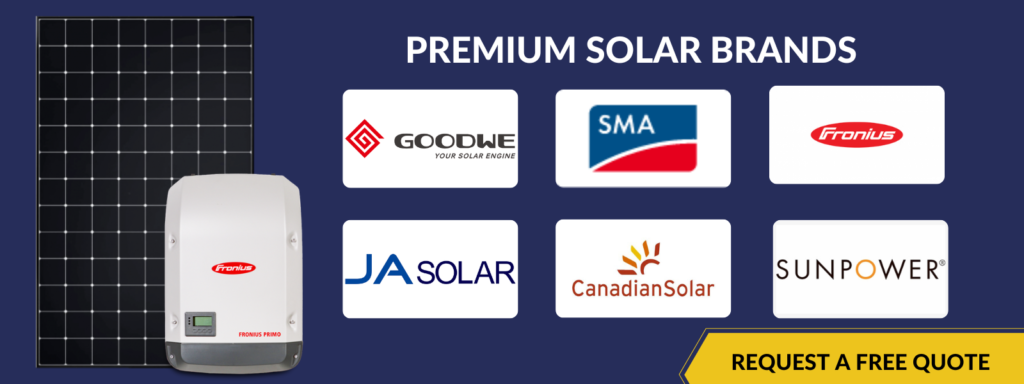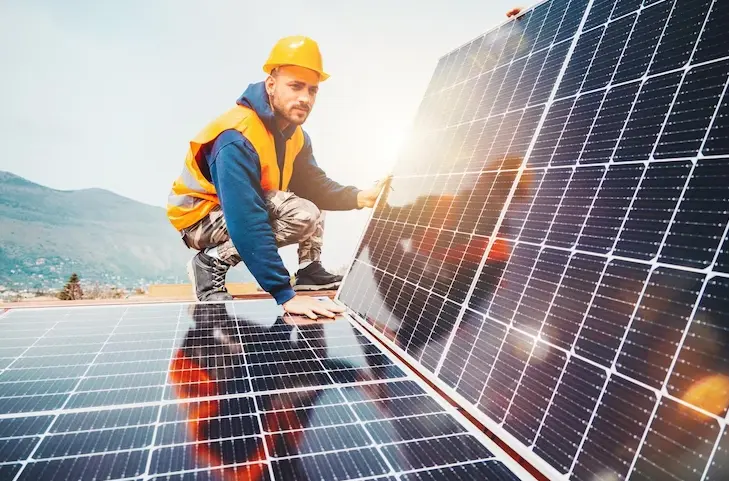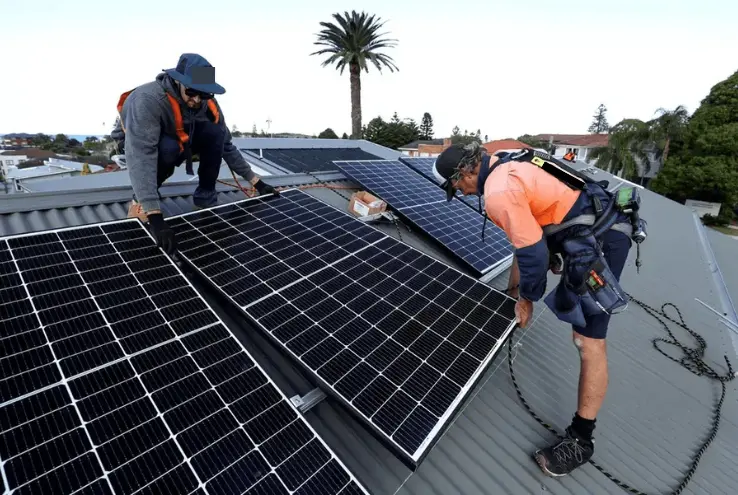In recent years, Sydney has seen a remarkable surge in solar panel installations, with over 20% of households now harnessing solar energy. This growing trend reflects a collective shift towards sustainable energy solutions, driven by both environmental concerns and economic incentives. However, as more homeowners invest in solar technology, understanding the lifespan of these systems becomes increasingly important. This article delves into the factors influencing the longevity of solar panels in Sydney, Australia, including environmental conditions, technological advancements, maintenance practices, and manufacturer warranties. By exploring these aspects, we aim to provide a comprehensive guide for maximizing the benefits of solar energy.
Understanding Solar Panel Lifespan
Solar panels are designed to last for 25 to 30 years, during which they provide a reliable source of renewable energy. This typical lifespan makes them a long-term investment for homeowners looking to reduce their carbon footprint and energy costs. However, it is important to note that solar panels do not maintain their initial efficiency throughout their entire lifespan. The degradation rate refers to the gradual decline in solar panel efficiency over time. On average, solar panels experience a degradation rate of about 0.5% to 1% per year. This means that after 25 years, a solar panel is likely to operate at approximately 80-90% of its original capacity. This reduction is influenced by factors such as the quality of materials used, manufacturing processes, and environmental conditions. Understanding this degradation helps homeowners set realistic expectations and plan for their energy production and potential future upgrades or replacements.
Factors Affecting Solar Panel Lifespan in Sydney
Climate and Weather Conditions
Sydney’s climate significantly influences the durability and longevity of solar panels. The city enjoys a sunny climate, making it ideal for solar energy production. However, certain environmental factors can impact the lifespan of solar panels.
- Impact of Sydney’s Climate on Solar Panel Durability:
Sydney experiences a moderate climate with warm summers and mild winters. The abundance of sunlight is beneficial for solar energy production, but the intensity of UV radiation can degrade solar panels over time. Prolonged exposure to high levels of UV radiation can cause the materials in solar panels to deteriorate, leading to a reduction in efficiency.
- Effects of UV Radiation, Humidity, and Temperature Fluctuations:
UV radiation, prevalent in Sydney’s sunny climate, can gradually wear down the photovoltaic cells in solar panels, affecting their performance. High humidity levels, particularly in coastal areas, can lead to moisture ingress, which can corrode electrical components and reduce the panels’ effectiveness. Additionally, Sydney’s temperature fluctuations, from hot summer days to cooler nights, can cause thermal cycling. This repeated expansion and contraction can stress the panels’ materials and connections, potentially leading to micro cracks and other forms of damage over time.
Understanding these climatic impacts helps in choosing appropriate solar panel types and implementing protective measures, such as regular maintenance and the use of UV-resistant coatings, to ensure the longevity of solar panels in Sydney‘s environment.

Installation Quality
The quality of solar panel installation plays a critical role in determining the overall lifespan and performance of the system. Professional installation is essential for ensuring that solar panels operate efficiently and last as long as possible.
- Importance of Professional Installation:
Hiring certified and experienced installers is crucial. Professional installers have the expertise to position panels optimally to maximize sunlight exposure and ensure that all electrical connections are secure and compliant with safety standards. They also ensure that the mounting systems are properly anchored to withstand local weather conditions, preventing issues such as wind uplift or water ingress. A professionally installed system is less likely to encounter operational issues, which can extend the lifespan of the solar panels.
- Common Installation Issues That Can Reduce Lifespan:
Several common issues can arise from subpar installation practices, negatively impacting the durability and efficiency of solar panels:
1. Improper Mounting: Inadequate mounting can lead to panels shifting or detaching, especially during strong winds or storms. This not only reduces efficiency but can also cause physical damage to the panels and roofing.
2. Poor Electrical Connections: Faulty wiring or loose connections can lead to electrical shorts, system inefficiencies, or even fire hazards. Consistent, high-quality electrical work is essential for the safety and longevity of the system.
3. Shading Issues: Incorrect panel placement can result in shading from nearby objects like trees, chimneys, or other buildings. Shading significantly reduces the energy output and efficiency of the solar panels.
4. Water Ingress: Poor sealing and inadequate weatherproofing can allow water to penetrate the system, causing corrosion and electrical failures. Ensuring that all components are properly sealed is vital to prevent moisture damage.
5. Panel Alignment and Orientation: Incorrect alignment or orientation can lead to suboptimal energy production. Panels must be aligned and angled correctly to capture the maximum amount of sunlight. By emphasizing the importance of professional installation and being aware of common installation pitfalls, homeowners can ensure their solar panels perform optimally and have a longer operational life, making the investment in solar energy more beneficial and reliable.
Maintenance Practices
- Routine Cleaning and Inspection:
Regular maintenance is crucial for ensuring the longevity and efficiency of solar panels. Routine cleaning helps remove dust, debris, bird droppings, and other contaminants that can obstruct sunlight and reduce the panels’ efficiency. In Sydney, where pollen and coastal salt can accumulate on panels, it is recommended to clean them at least twice a year. Inspections should also be conducted regularly to check for any physical damage, such as cracks or loose connections. These inspections can identify potential issues before they become major problems, ensuring the panels continue to function optimally.
- Importance of Prompt Repairs:
Prompt repairs are essential to prevent minor issues from escalating into significant problems that could shorten the lifespan of the solar panels. For instance, addressing micro cracks or loose wiring immediately can prevent further damage and maintain the system’s efficiency. Delaying repairs can lead to more extensive damage, increased degradation rates, and even complete system failure. By addressing issues quickly, homeowners can ensure their solar panels remain effective and durable over their intended lifespan.

Technological Advances
- Impact of Newer Technologies on Longevity:
Technological advancements in solar panel manufacturing have significantly improved the durability and efficiency of modern solar panels. Innovations such as improved photovoltaic materials, better manufacturing techniques, and enhanced protective coatings have resulted in panels that degrade more slowly and perform better over time. Newer technologies also offer better resistance to environmental stressors such as UV radiation and thermal cycling, which are common in Sydney’s climate.
- Comparison of Older vs. Newer Solar Panel Models:
Older solar panel models tend to have higher degradation rates and may lack the advanced features found in modern panels. For example, early models might degrade at a rate of 1% per year, while newer models degrade at a rate closer to 0.3% per year. Additionally, newer panels often come with longer and more comprehensive warranties, reflecting the increased confidence manufacturers have in their products’ longevity. Advances in inverter technology, energy storage solutions, and integrated monitoring systems also contribute to the improved performance and lifespan of modern solar panel systems. This comparison highlights the benefits of investing in the latest solar technologies to ensure maximum efficiency and durability over the long term.
Manufacturer Warranties and Guarantees
Warranty Types
- Performance Warranty:
A performance warranty guarantees that solar panels will maintain a certain level of efficiency over a specified period, typically 25 to 30 years. This warranty ensures that the panels will not degrade beyond a certain percentage annually, often around 0.5% to 0.8% per year. For example, a typical performance warranty might promise that the panels will produce at least 80% of their original capacity after 25 years. This type of warranty is crucial for homeowners to ensure that their investment continues to deliver expected energy savings over the long term.
- Product Warranty:
A product warranty, also known as a materials or equipment warranty, covers defects in materials and workmanship. This warranty usually lasts between 10 and 25 years, depending on the manufacturer. It protects homeowners against manufacturing defects and premature failures, ensuring that the panels and associated equipment are free from defects that could impair performance. Product warranties often cover issues such as frame corrosion, glass breakage, and problems with junction boxes and connectors. However, they typically do not cover damage caused by external factors like storms, fire, or improper installation.

Typical Warranty Periods
- Industry Standards for Warranty Durations:
The industry standard for solar panel warranties includes a 25-year performance warranty and a 10 to 25-year product warranty. High-quality panels from reputable manufacturers tend to offer the longest and most comprehensive warranties. These warranties reflect the manufacturer’s confidence in their product’s durability and performance.
- What Warranties Cover and What They Don’t:
Warranties generally cover defects in materials and workmanship and ensure a certain level of performance over time. However, they do not usually cover damage resulting from external events such as extreme weather conditions, improper installation, or lack of maintenance. Homeowners must adhere to maintenance guidelines specified by the manufacturer to keep warranties valid. This includes regular cleaning, inspections, and prompt repairs of any issues. Understanding the specific terms and conditions of warranties helps homeowners protect their investment and ensures that they receive necessary support if their solar panels do not perform as expected.
Economic Considerations
Return on Investment (ROI)
- Calculating ROI Based on Lifespan and Efficiency:
Calculating the return on investment (ROI) for solar panels involves analysing the upfront cost of installation against the savings generated over the system’s lifespan. This calculation considers factors such as the initial cost of the system, ongoing maintenance expenses, energy savings, and potential revenue from selling excess electricity back to the grid. By estimating the system’s efficiency and lifespan, homeowners can determine the payback period and the overall ROI of their investment in solar energy.
- Impact of Government Incentives and Rebates in Australia:
Government incentives and rebates, such as solar feed-in tariffs, renewable energy certificates (RECs), and solar rebates, play a significant role in the financial viability of solar panel installations in Australia. These incentives help offset the upfront costs of installation, making solar energy more accessible and attractive to homeowners. Understanding and leveraging these incentives can substantially improve the ROI of solar panel investments, accelerating payback periods and increasing overall savings on energy bills.
Cost of Replacement
- Financial Implications of Replacing Solar Panels:
While solar panels typically have a lifespan of 25 to 30 years, eventual replacement costs should be considered in the overall economic analysis. The cost of replacing solar panels includes not only the price of new panels but also labor costs for installation and potential upgrades to inverters or other system components. Homeowners should budget for these replacement expenses and factor them into their long-term financial planning to ensure the continued sustainability of their solar energy system.
- Comparison of Long-Term Costs with Traditional Energy Sources:
When comparing the long-term costs of solar energy with traditional energy sources like fossil fuels, it’s essential to consider factors such as rising electricity prices, fuel costs, and environmental impacts. Solar energy offers stable, predictable energy costs over its lifespan, protecting homeowners from fluctuations in energy prices and reducing reliance on non-renewable resources. By offsetting or eliminating electricity bills and potentially earning income through feed-in tariffs, solar panels provide significant long-term savings and environmental benefits compared to traditional energy sources.
By carefully evaluating these economic considerations, homeowners can make informed decisions about investing in solar energy, maximizing financial returns, and contributing to a more sustainable energy future.
Tips for Maximizing Solar Panel Lifespan
Regular Maintenance
- Best Practices for Maintaining Solar Panels:
Regular maintenance is essential for maximizing the lifespan and efficiency of solar panels. Best practices include cleaning the panels every six months to remove dust, debris, and bird droppings that can obstruct sunlight and reduce performance. Use a soft brush or sponge with mild detergent and water to avoid scratching the panels. Additionally, inspect the panels annually for any signs of damage, such as cracks or loose connections. Promptly address any issues to prevent further damage and ensure optimal performance.
- Recommended Maintenance Schedule:
Establishing a regular maintenance schedule is crucial for ensuring the longevity of solar panels. Aim to clean the panels every six months or as needed, depending on local environmental conditions. Conduct a comprehensive inspection annually to check for damage or wear and tear. Additionally, monitor the system’s performance regularly using monitoring software or tools provided by the manufacturer to detect any deviations from expected output promptly.

Choosing Quality Products
- Importance of Selecting High-Quality Panels and Inverters:
Investing in high-quality solar panels and inverters is essential for maximizing lifespan and performance. Quality panels are made from durable materials that can withstand harsh weather conditions, such as UV radiation, high temperatures, and humidity. Similarly, choosing reliable inverters ensures efficient conversion of solar energy into usable electricity. Research reputable manufacturers and look for certifications such as IEC, UL, or CEC accreditation to ensure product quality and reliability.
Professional Installation
- Benefits of Hiring Certified Installers:
Professional installation by certified installers is critical for ensuring the proper functioning and longevity of solar panel systems. Certified installers have the expertise and experience to correctly position and secure panels, optimize system performance, and comply with local building codes and regulations. They also ensure that electrical connections are safely and securely installed to prevent hazards such as electrical shorts or fires. By hiring certified installers, homeowners can have peace of mind knowing that their solar panels are installed correctly and will operate efficiently for years to come.
Conclusion
In conclusion, the lifespan of solar panels in Sydney, Australia, is influenced by various factors, including environmental conditions, installation quality, maintenance practices, technological advancements, and warranty coverage. Understanding these factors is crucial for homeowners looking to invest in solar energy and maximize their return on investment. Sydney’s climate, characterized by abundant sunlight and moderate temperatures, provides an ideal environment for solar energy production. However, factors such as UV radiation, humidity, and temperature fluctuations can impact the durability and efficiency of solar panels over time.
Professional installation by certified installers is essential for ensuring the proper positioning, mounting, and wiring of solar panels, minimizing the risk of damage and optimizing performance. Regular maintenance, including cleaning and inspections, helps identify and address potential issues early, prolonging the lifespan of solar panels.
Technological advancements in solar panel manufacturing have led to more durable and efficient panels with longer lifespans. Homeowners should prioritize selecting high-quality products from reputable manufacturers to maximize longevity and performance.
Manufacturer warranties provide financial protection and peace of mind, covering defects in materials and workmanship, as well as guaranteeing performance levels over time. Understanding the terms and conditions of warranties is essential for homeowners to make informed decisions about their solar investments. In conclusion, embracing solar energy offers numerous benefits, including reduced energy costs, environmental sustainability, and energy independence. By considering the factors discussed in this article and implementing best practices for installation, maintenance, and product selection, homeowners can ensure their solar panels operate efficiently and reliably for many years, contributing to a greener and more sustainable future for Sydney and beyond.

